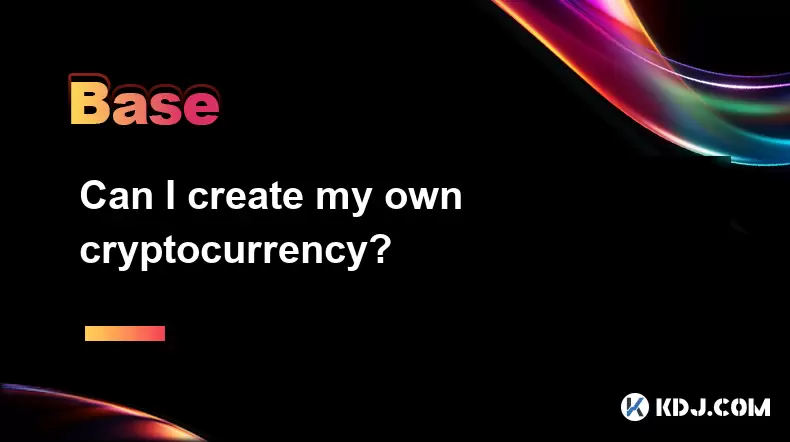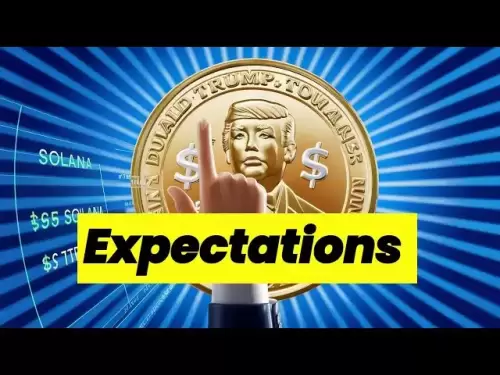-
 Bitcoin
Bitcoin $118300
0.35% -
 Ethereum
Ethereum $3758
6.10% -
 XRP
XRP $3.508
2.11% -
 Tether USDt
Tether USDt $1.000
-0.02% -
 BNB
BNB $751.6
3.09% -
 Solana
Solana $180.8
2.32% -
 USDC
USDC $0.9999
0.01% -
 Dogecoin
Dogecoin $0.2642
9.89% -
 Cardano
Cardano $0.8651
5.36% -
 TRON
TRON $0.3181
-0.30% -
 Hyperliquid
Hyperliquid $46.81
4.94% -
 Stellar
Stellar $0.4700
0.96% -
 Sui
Sui $3.938
4.38% -
 Chainlink
Chainlink $19.44
7.87% -
 Hedera
Hedera $0.2781
3.87% -
 Bitcoin Cash
Bitcoin Cash $548.9
8.91% -
 Avalanche
Avalanche $25.20
6.19% -
 Shiba Inu
Shiba Inu $0.00001540
5.34% -
 Litecoin
Litecoin $118.3
16.74% -
 UNUS SED LEO
UNUS SED LEO $8.978
-0.15% -
 Toncoin
Toncoin $3.295
4.26% -
 Polkadot
Polkadot $4.516
6.76% -
 Uniswap
Uniswap $10.66
6.62% -
 Ethena USDe
Ethena USDe $1.001
0.00% -
 Monero
Monero $327.2
0.14% -
 Pepe
Pepe $0.00001410
8.54% -
 Bitget Token
Bitget Token $4.955
1.73% -
 Dai
Dai $0.9998
-0.01% -
 Aave
Aave $328.8
4.63% -
 Bittensor
Bittensor $430.8
5.40%
What are Bitcoin Rainbow Charts?
Bitcoin Rainbow Charts use color-coded bands to help investors gauge if Bitcoin is overbought or undervalued, based on historical price trends and moving averages.
Jul 20, 2025 at 01:21 pm

Understanding Bitcoin Rainbow Charts
Bitcoin Rainbow Charts are visual analytical tools used by traders and investors to assess the potential overvaluation or undervaluation of Bitcoin. These charts overlay multiple exponential moving averages on a logarithmic price chart, creating distinct color bands that resemble a rainbow. Each color represents a different price zone, offering insight into market sentiment and possible entry or exit points for traders.
The core idea behind the Rainbow Chart is to identify price cycles and determine whether Bitcoin is in a bullish or bearish phase based on historical patterns. The chart is not a predictive model but rather a retrospective guide that helps interpret long-term trends.
Important:
The Rainbow Chart does not guarantee future performance or price movements. It is best used in conjunction with other technical and fundamental analysis tools.How Are Bitcoin Rainbow Charts Constructed?
The Rainbow Chart is built using logarithmic regression applied to Bitcoin’s historical price data. A logarithmic scale is chosen because it better represents the exponential growth patterns typically seen in Bitcoin’s price movements.
The chart features multiple exponential moving average bands, each calculated using a different multiplier. These bands are then color-coded to represent different price zones:
- Red Band: Indicates overbought conditions and potential market tops.
- Orange Band: Suggests strong bullish momentum but increasing risk.
- Yellow Band: Often associated with speculative fervor and rapid price gains.
- Green Band: Represents a healthy bull market phase.
- Blue and Purple Bands: Signal undervalued conditions and potential buying opportunities.
The bands widen over time, reflecting the increasing volatility and potential for larger price swings as Bitcoin matures.
Interpreting Bitcoin Rainbow Charts
Interpreting a Rainbow Chart involves analyzing where the current price is in relation to the colored bands. For example:
- If Bitcoin’s price is in the red zone, it may indicate that the market is overheated and due for a correction.
- When the price is in the blue or purple zone, it might suggest that the asset is undervalued, especially after a bear market.
- The green zone is often seen as the ideal long-term investment range, where price growth is sustainable and not speculative.
It’s important to note that the Rainbow Chart is not a timing tool. Prices can remain in overbought or oversold zones for extended periods. Traders should combine this with volume analysis, on-chain metrics, and macroeconomic indicators for more robust decision-making.
Historical Accuracy and Limitations
Bitcoin Rainbow Charts have shown some correlation with historical price cycles. For instance, major tops in 2017 and 2021 occurred when Bitcoin was in the red zone. Similarly, bottoms in 2018 and 2020 aligned with the purple band.
However, the chart has several limitations:
- Lagging Indicator: Since it's based on historical data, it may not capture sudden market shifts or black swan events.
- Subjective Interpretation: Different analysts may interpret the bands differently based on their investment strategies.
- Not Suitable for Short-Term Trading: The Rainbow Chart is best used for long-term trend analysis rather than day trading.
Additionally, Bitcoin’s increasing adoption and institutional interest may alter historical patterns, making past performance less indicative of future results.
How to Access and Use Bitcoin Rainbow Charts
Bitcoin Rainbow Charts are widely available on crypto analytics platforms and financial websites. Popular sources include:
- TradingView: Allows users to apply the Rainbow Chart indicator on Bitcoin price charts.
- Glassnode: Offers on-chain data combined with Rainbow Chart overlays.
- CryptoCompare: Provides customizable Rainbow Chart templates for institutional and retail traders.
To use the chart effectively:
- Select a platform that supports the Rainbow Chart indicator.
- Apply the indicator to the Bitcoin price chart with a weekly or monthly time frame.
- Observe how the price interacts with each color band over time.
- Combine insights with other indicators like RSI, MACD, or volume to confirm signals.
Remember, the Rainbow Chart is most effective when used as part of a diversified analytical toolkit.
Frequently Asked Questions
Q: Can Bitcoin Rainbow Charts be used for other cryptocurrencies?
A: While originally designed for Bitcoin, the Rainbow Chart can be applied to other cryptocurrencies. However, due to differences in market maturity and volatility, the reliability may vary.
Q: What time frame is best for analyzing Bitcoin Rainbow Charts?
A: The Rainbow Chart works best on longer time frames like weekly or monthly charts to smooth out short-term volatility and capture broader trends.
Q: Do Rainbow Charts account for halving events?
A: The Rainbow Chart does not specifically factor in halving events. However, historical data shows that halvings often coincide with movements in and out of different Rainbow bands.
Q: Is the Rainbow Chart a standalone investment tool?
A: No, the Rainbow Chart should not be used in isolation. It is a visual guide and works best when combined with fundamental analysis, on-chain metrics, and risk management strategies.
Disclaimer:info@kdj.com
The information provided is not trading advice. kdj.com does not assume any responsibility for any investments made based on the information provided in this article. Cryptocurrencies are highly volatile and it is highly recommended that you invest with caution after thorough research!
If you believe that the content used on this website infringes your copyright, please contact us immediately (info@kdj.com) and we will delete it promptly.
- Iron Maiden: Music Legends Celebrate 50 Years with Royal Mint Coin
- 2025-07-21 00:30:13
- BlockDAG, TIA, LTC: Unveiling the Latest Crypto Buzz
- 2025-07-21 00:50:12
- Ethereum Layer-2 Meme Coins: Little Pepe's Big Leap?
- 2025-07-21 00:30:13
- MoonBull, Crypto, and BOME Gains: Riding the Meme Coin Wave to 100x?
- 2025-07-21 00:50:12
- Bitcoin, ETH, and the Trader Target: Decoding the Crypto Landscape
- 2025-07-21 01:10:14
- Solana's TVL Growth: Riding the Cryptocurrency Wave
- 2025-07-21 01:10:14
Related knowledge

What is the difference between a sidechain and a Layer 2?
Jul 20,2025 at 11:35pm
Understanding the Concept of SidechainsA sidechain is a separate blockchain that runs parallel to the main blockchain, typically the mainnet of a cryp...

What is the Inter-Blockchain Communication Protocol (IBC)?
Jul 19,2025 at 10:43am
Understanding the Inter-Blockchain Communication Protocol (IBC)The Inter-Blockchain Communication Protocol (IBC) is a cross-chain communication protoc...

How does sharding improve scalability?
Jul 20,2025 at 01:21am
Understanding Sharding in BlockchainSharding is a database partitioning technique that is increasingly being adopted in blockchain technology to enhan...

What is the "crypto trilemma" of scalability, security, and decentralization?
Jul 19,2025 at 06:28pm
Understanding the Concept of the Crypto TrilemmaThe crypto trilemma refers to the challenge of simultaneously achieving scalability, security, and dec...

What is a cliff and vesting schedule in tokenomics?
Jul 20,2025 at 10:28am
What Does a Cliff Mean in Tokenomics?In tokenomics, a cliff refers to a specific period during which token holders are not allowed to access or transf...

Can I create my own cryptocurrency?
Jul 20,2025 at 11:49pm
Understanding the Basics of Creating a CryptocurrencyYes, you can create your own cryptocurrency, but it involves a combination of technical knowledge...

What is the difference between a sidechain and a Layer 2?
Jul 20,2025 at 11:35pm
Understanding the Concept of SidechainsA sidechain is a separate blockchain that runs parallel to the main blockchain, typically the mainnet of a cryp...

What is the Inter-Blockchain Communication Protocol (IBC)?
Jul 19,2025 at 10:43am
Understanding the Inter-Blockchain Communication Protocol (IBC)The Inter-Blockchain Communication Protocol (IBC) is a cross-chain communication protoc...

How does sharding improve scalability?
Jul 20,2025 at 01:21am
Understanding Sharding in BlockchainSharding is a database partitioning technique that is increasingly being adopted in blockchain technology to enhan...

What is the "crypto trilemma" of scalability, security, and decentralization?
Jul 19,2025 at 06:28pm
Understanding the Concept of the Crypto TrilemmaThe crypto trilemma refers to the challenge of simultaneously achieving scalability, security, and dec...

What is a cliff and vesting schedule in tokenomics?
Jul 20,2025 at 10:28am
What Does a Cliff Mean in Tokenomics?In tokenomics, a cliff refers to a specific period during which token holders are not allowed to access or transf...

Can I create my own cryptocurrency?
Jul 20,2025 at 11:49pm
Understanding the Basics of Creating a CryptocurrencyYes, you can create your own cryptocurrency, but it involves a combination of technical knowledge...
See all articles

























































































